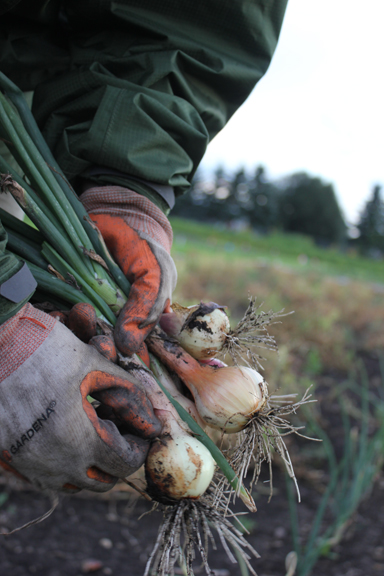Eating carrots and and kale is good for you – that’s a given. But at the two-acre University of Alberta Green and Gold Community Garden, you can get veggies that also do plenty of good in the world.
At the garden, which is supported by the university’s School of Public Health and the Faculty of Agricultural, Life and Environmental Sciences, you can get a variety of herbs, flowers and vegetables, all for the price of a donation to help marginalized women in Rwanda.
When you arrive, a volunteer will guide you through the garden and pick your vegetables for you. Don’t know which of the four types of kale to get? The volunteer will give you a taste of each, and even explain how to prepare it.
Since opening in 2009, the volunteer-run garden has grown 45 types of vegetables without pesticides or artificial fertilizers. The land, seeds, plants and equipment are all donated from many places in the community, so every cent raised from the garden – about $20,000 per year – goes directly to Tubahumurize Association, a non-profit organization offers some 300 Rwandan women counselling, health education, vocational training and micro-loans to kick-start businesses. Many of the women are HIV-positive, victims of domestic violence, widows or orphans. Here, they learn tailoring and embroidery skills or, with a $30 loan, set up a market stand and gain economic independence.
“We hope to empower them with a source of income so they can break free from the cycle of violence,” says Shirley Ross, the garden’s designer and one of six core volunteers. Ross visited Tubahumurize last year and saw firsthand how the garden’s funds enabled 25 graduates of the program to start a sewing cooperative. “It’s inspiring to see how they can turn their lives around,” says Ross.
Market hours: The Green and Gold Community Garden (115th Street and 60th Avenue) is open to the public Tuesdays 6:30 p.m. to 8 p.m., Saturdays from 11 a.m. to 1 p.m., July to mid-Oct.
